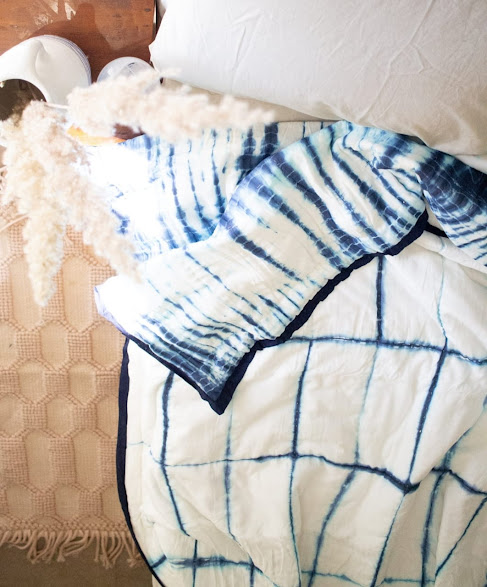If you are someone who likes to keep up with trends you must have seen or heard of tie-dye. There are numerous methods to tie and dye a piece of fabric. One such technique is Shibori. Shibori is a manual resist dyeing method used in Japan to create patterns on textiles. Patterns are added on raw cloth that has been manipulated to resist the dye, leaving the natural fibres behind, as with all forms of resist-dyeing. The earliest known evidence of shibori coloured cloth in Japan originates from the 8th century when it was unearthed at the Todai-Ji Temple in Nara, where it had been put as a gift from Emperor Shomu. The height of shibori manufacturing, on the other hand, did not happen until much later, in the 17th and 18th centuries. In Japan, there were few fabrics and dyes that were widely used. Silk and hemp were the most popular fabrics, followed by cotton. Indigo was the most common dye, with madder and purple root coming in second and third. Only the upper sections of society were allowed to use silk at the time, the lower classes resorted to extremely elaborate shibori fabrics.
All of these textiles and colours were treated with shibori and other textile arts such as tsutsugaki. For shibori, there are an endless amount of ways to tie, stitch, fold, twist, or compress cloth, and each method produces a unique design. Shibori is a term that refers to a variety of resist-dyeing methods. The following are some of them:
Kanoko shibori
This process, like tie-dye, uses elastic bands to tightly bind material before dyeing, resulting in an organic-looking design.
Itajime shibori
This technique uses shaped blocks (traditionally made of wood, but often made of plastic) between which folded cloth is sandwiched to produce designs rather than tying and cinching.
Kumo Shibori
This tie-dying technique is likely recognisable to anyone who has prior experience in tie and dye. This approach includes pleating and twisting rubber bands to create the illusion of a spider web. Rubber bands hold the cloth in place as it wraps around things, usually stones.
Nui shibori
This time-consuming technique employs stitching to produce exact tight patterns in fabric, which is then dyed away.
Although the quality and proficiency of shibori is much advanced in Japan, it was allegedly brought to India by Nobel Laureate Rabindranath Tagore in the early twentieth century and is today done in craft clusters in Delhi, Gujarat, and Rajasthan. Shibori textiles can be any colour, although they're usually single-coloured, with indigo as the typical dye. Shibori textiles are still used to make apparel today, but the skill has also made its way into the domain of home decor, from curtains to quilts, cushion covers, throws to pillows.
Pictures via karibykriti
"6 Shibori Tie Dye Techniques". Favecrafts.Com, 2021, https://www.favecrafts.com/Tie-Dye/What-Is-Shibori-Tie-Dye.




Share your thoughts :